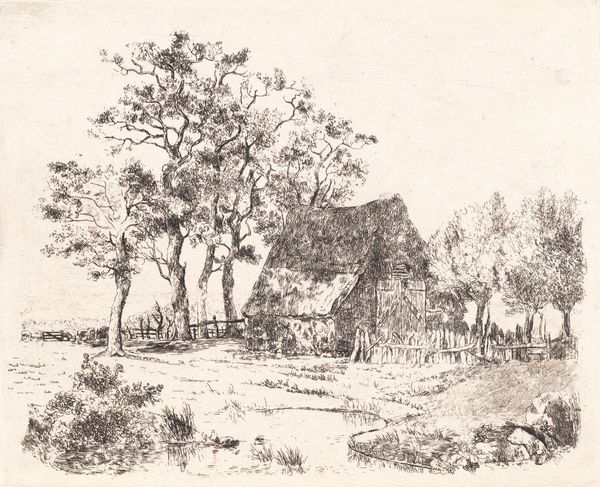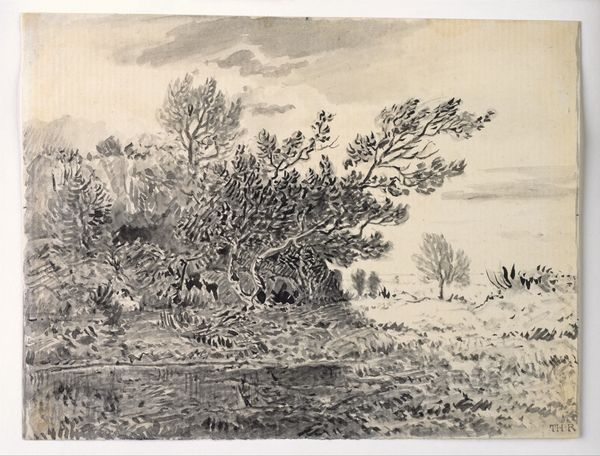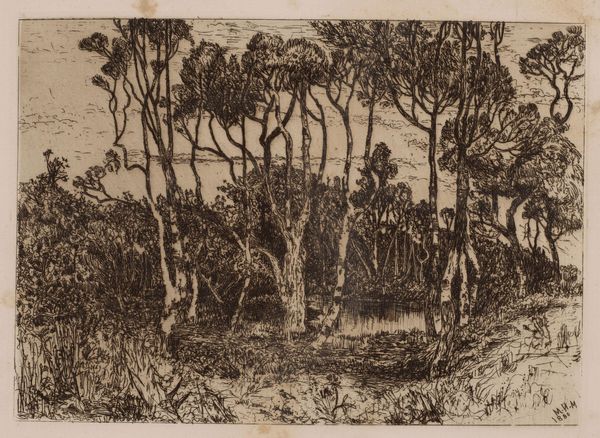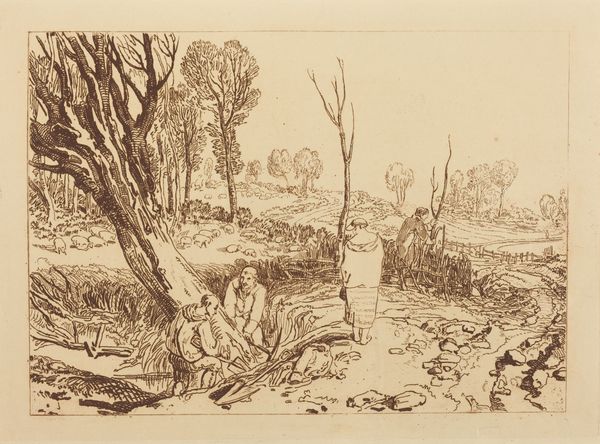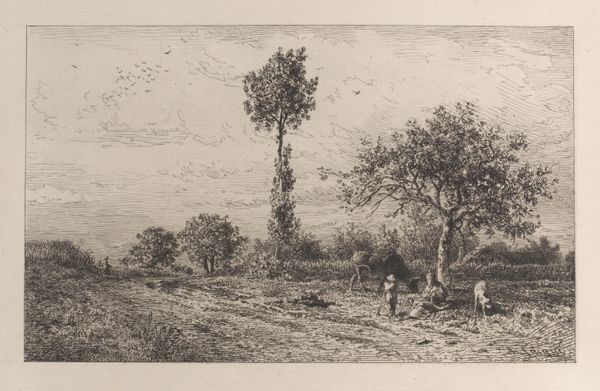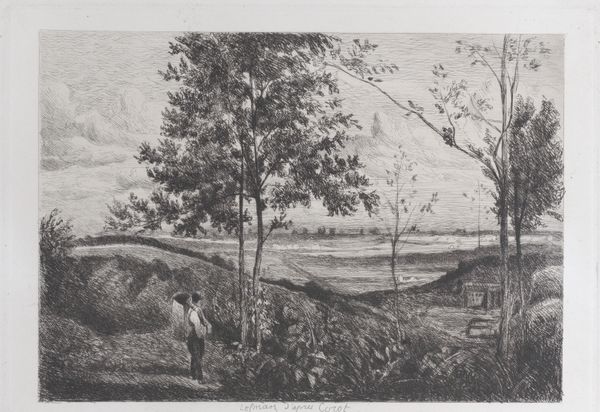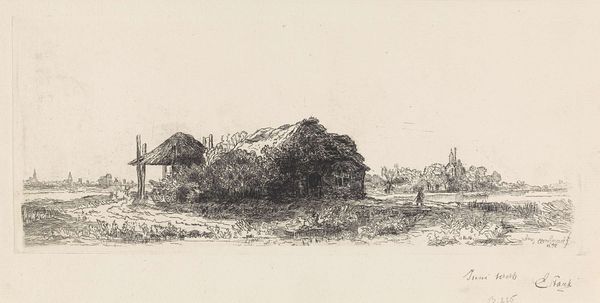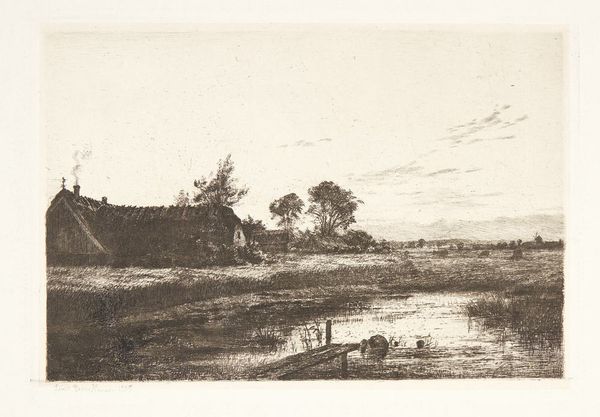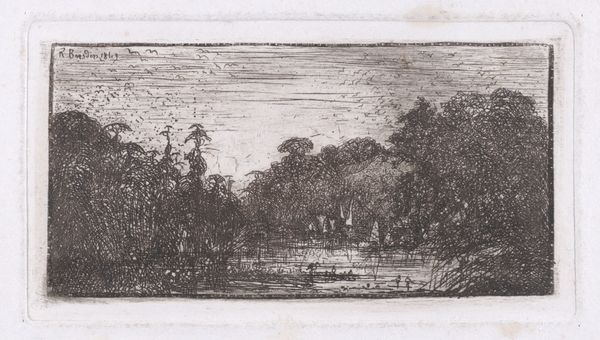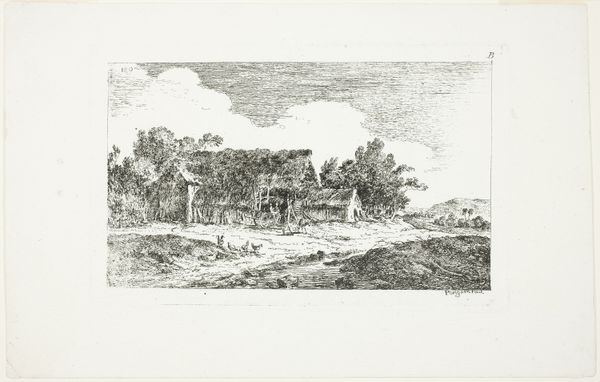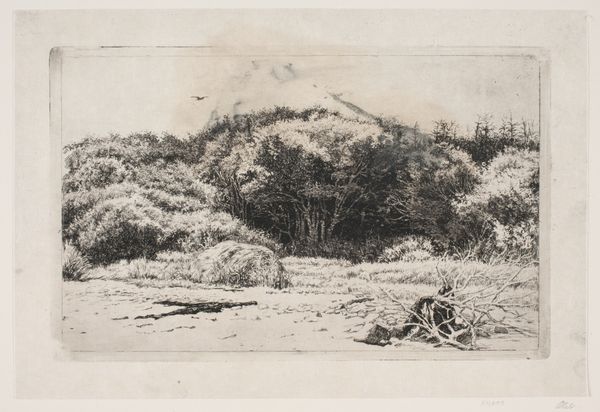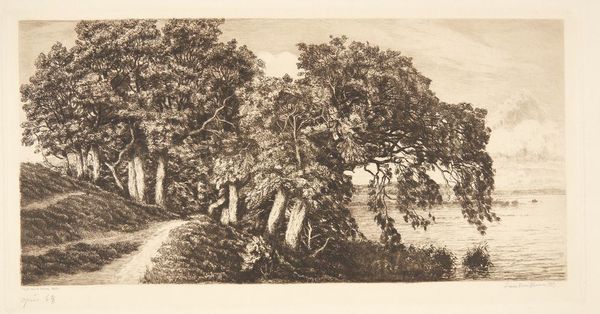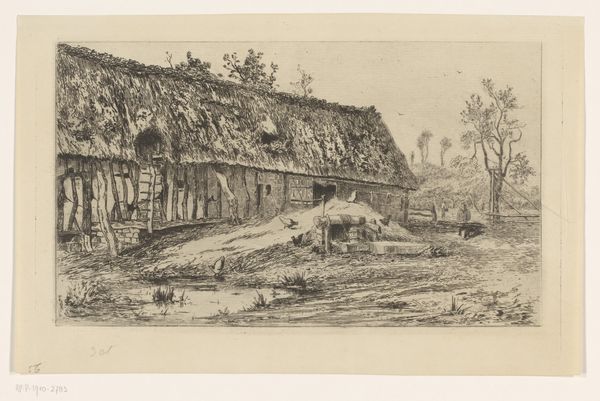
print, etching
# print
#
etching
#
landscape
#
realism
Dimensions: 108 mm (height) x 149 mm (width) (Plademål)
Curator: This is Niels Skovgaard’s 1883 etching, "Bondegård i Nestelsø," or "Farm in Nestelsø." The crisp lines give it a wonderfully detailed texture. What stands out to you at first glance? Editor: It has a somewhat melancholic, quiet feeling. Stark black and white imagery and dense lines suggest a simple and humble existence. Curator: Skovgaard's choice to create this landscape as a print is quite interesting, as realism, in painting especially, was increasingly becoming a dominant style for communicating objective truth about the human condition. How does this landscape further those pursuits? Editor: The way he emphasizes everyday details—the chickens pecking, the texture of the thatched roofs and haystacks, all those little details. I see echoes of traditional rural life; haystacks remind me of shelter, but perhaps Skovgaard means something beyond just surface portrayal. Curator: Certainly! He's inviting us to connect to this cultural memory. The stark contrasts create such striking patterns, but what do the arrangements suggest to you? Editor: The scene's not picturesque. The composition feels weighted toward the left, and the whole image conveys a sense of unsentimental rural life, right? These are solid, perhaps unremarkable people who toil everyday within their landscapes, their community—their sense of place. I suppose the art asks us to think about their perspective, about their belonging. Curator: And in the Danish Golden Age, which really championed a strong national identity and folk awareness, it's important that the landscape have specific characteristics, to allow it to feel distinctly "Danish". Does this image present symbols unique to this kind of landscape? Editor: Maybe those chickens; it seems the Danish peasantry in general kept chickens! But seriously, though, the thatched roofing would perhaps serve as a stronger identifier—a visual anchor associated with certain landscapes or cultures—establishing Denmark in this case. Curator: Well, "Farm in Nestelsø" gives us so much to reflect on, regarding themes of homeland, everyday realities, and cultural values. Editor: Yes, Skovgaard's eye really asks us to rethink our connections between people and place and consider how this bond forms collective identities, and realities.
Comments
No comments
Be the first to comment and join the conversation on the ultimate creative platform.
